
Indicator scoreboard
EMU - January Reuters manufacturing PMI rose to 49.3 from 48.4 in December. An index level below 50 signals contraction in the manufacturing sector, above 50 expansion. The lower the index is below 50, the faster the decline in activity. New orders expanded slightly with the index rising to 51.0 - the highest level since last August - from 49.3 in December. The Reuters services PMI however, fell to 50.2 in January from 50.6 in the prior month. (For the U.S., the manufacturing index slipped but remained above the breakeven point while the non-manufacturing index rose.)

December seasonally adjusted unemployment rate was 8.5 percent. Of the nine EMU states reporting data for December, unemployment rose in seven and remained unchanged in two. Eurostat estimated that in December 2002, 11.9 million men and women were unemployed in the eurozone. These data are seasonally adjusted in line with International Labour Organization criteria.

December industrial producer prices (excluding construction) rose 0.3 percent and 1.5 percent when compared with last year. Prices rose because of a sharp increase in energy products. Excluding energy products, PPI edged up only 0.1 percent and 1.1on the year.

November real seasonally and workday adjusted retail sales fell 0.5 percent and 0.4 percent when compared with last year. Most retail trade categories fell on the month with the exception of food, drinks and tobacco and books, newspapers sales. Sales of non-food products fell 1.4 percent. On the year, sales were up in Spain, Sweden, Finland, Italy, Ireland and France. They were down in Germany, Belgium, Portugal and Austria.
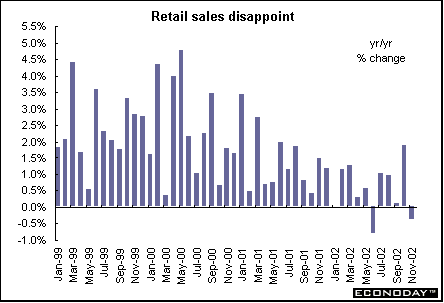
January flash harmonized index of consumer prices rose 0.3 percent and 2.1 percent on the year. Eurostat noted that "this month's flash estimate carries a greater uncertainty than past performance would indicate," explaining that the German provisional result for January 2003 used in the calculation is the last rate calculated according to the basket of goods and services using the base year of 1995, while the final result for January 2003 will refer to the basket of goods and services and consumer behavior of the year 2000. In order to compute its HICP flash estimates, Eurostat uses early price information provided by Germany, Italy and - if available - by other member countries, as well as early information about energy prices.
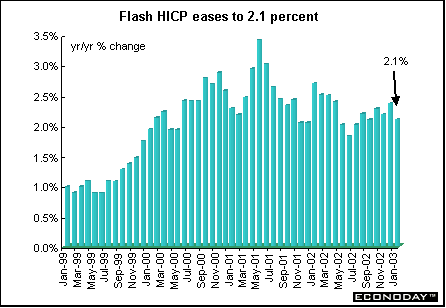
Germany - December real seasonally and workday adjusted retail sales including auto dealerships and gasoline stations fell 1.1 percent and 3.0 percent when compared with last year. Seasonally adjusted retail sales excluding auto and petrol stations fell 0.7 percent and 3.2 percent on the year.
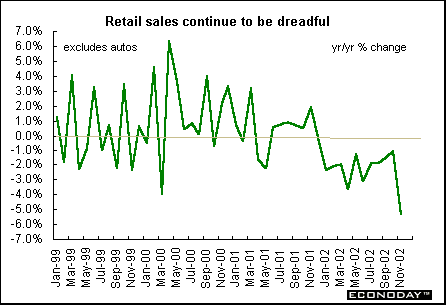
December seasonally adjusted manufacturing orders plunged 4.1 percent and were down 2.0 percent when compared with last year. Orders were down 4.3 percent in west Germany and fell 0.9 percent in east Germany. Weakness in demand was widespread, with December domestic orders flat and foreign demand plunging 8.7 percent. On the year, they were down 2.2 percent and 1.8 percent respectively. All subcategories declined. The December drop was attributed to fluctuations in the volume of big-ticket export orders.
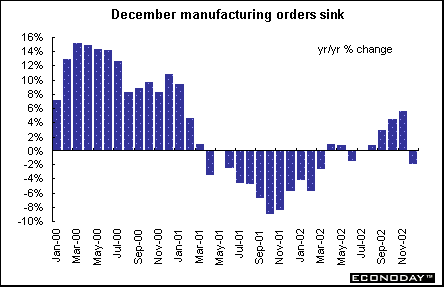
January seasonally adjusted unemployment jumped by 62,000. The reasons for the increases were the weak economy, structural problems, and harsh winter weather. A drop in participation in government job training programs, due in part to legal changes, contributed to the rise in January unemployment as well. Many laid-off workers had a year-end termination date, boosting January joblessness. The jobs law decertifies long-term unemployed who are not actively looking for work, thereby reducing the official number of jobless. The seasonally adjusted unemployment rate rose to 10.3 percent in January from 10.1 percent in December, the highest rate since November 1999. In east Germany, the unemployment rate rose to 18.2 percent from 18 percent in December. In west Germany, the rate rose to 8.1 percent from 8 percent in December.
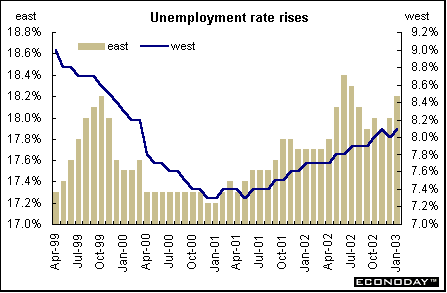
Britain - January Chartered Institute of Purchasing and Supply manufacturing index fell to 48.6 from 49.3 in the previous month. The latest contraction was driven by a fall in orders along with employment cuts, and an inventory adjustment. A reading of over 50 on the CIPS survey indicates an expansion, while one below 50 suggests a contraction.
The January Chartered Institute of Purchasing and Supply service sector index was 52.3, down from 53.2 in December. The decline in the activity index was due in part to a fall in incoming new business. The survey showed a pick-up in service sector employment, with the employment index rising to 48.4 from 47.9.
The January Halifax house price index jumped 1.5 percent and 22.6 percent when compared with the same month a year earlier. The Halifax said that unemployment, interest rates, and affordability were the key driving forces for the housing market.
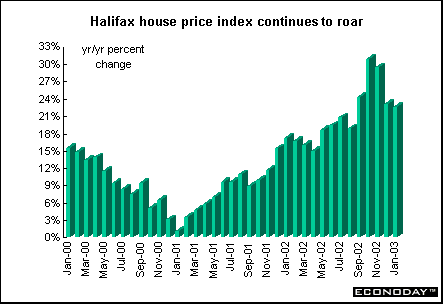
December industrial output declined 0.2 percent and was down 1.0 percent when compared with last year. Manufacturing production fell 0.3 percent and 1.2 percent on the year. Production was driven lower by a significant drop in transport equipment output and declines in the majority of other sectors. Nine of the 13 manufacturing sectors declined. For 2002, manufacturing output declined 4 percent when compared with 2001, which was the weakest performance since 1991.
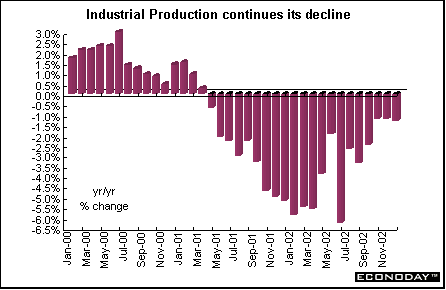
Asia
Japan - December seasonally adjusted household spending fell 4.2 percent and 0.8 percent when compared with last year. This was the third monthly drop as wages slid and companies cut jobs. The seasonally adjusted nominal propensity for wage earners to consume, a ratio which measures the amount of disposable income that went to household spending, rose to 74.6 percent from 71.9 percent in November.
Americas
Canada - January employment slipped by 2,100 while the employment rate declined 0.1 percent to 7.4 percent. Full-time employment growth continued to grow, adding 34,400 jobs. Part time employment fell by 36,500. The labor force participation rate in January was 67.3 percent, down 0.2 percent from the record 67.5 percent set in December and once before, in January 1990. Employment fell in professional, scientific and technical services, and in factories. The largest job decline was in computer and electronics products manufacturing.
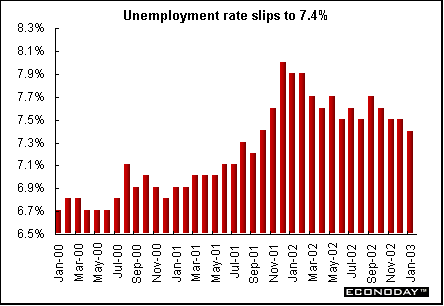


Last Week's Highlights • Global
Stock Market Indexes • Recap of Global Markets
• Currencies • Indicator
Scoreboard

The Bottom Line •
Looking Ahead
|